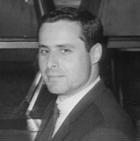Difference between revisions of "Peter Buxtun"
(Created page with "{{person |wikipedia=https://en.wikipedia.org/wiki/Peter_Buxtun |twitter= |image=Peter Buxtun.jpg |nationality=US |birth_date=1937 |birth_place=Prague |death_date= |death_place...") |
(desc) |
||
| Line 1: | Line 1: | ||
{{person | {{person | ||
|wikipedia=https://en.wikipedia.org/wiki/Peter_Buxtun | |wikipedia=https://en.wikipedia.org/wiki/Peter_Buxtun | ||
| − | | | + | |exposed=Tuskegee syphilis experiment |
|image=Peter Buxtun.jpg | |image=Peter Buxtun.jpg | ||
|nationality=US | |nationality=US | ||
| Line 8: | Line 8: | ||
|death_date= | |death_date= | ||
|death_place= | |death_place= | ||
| + | |description=Blew the whistle on the Tuskegee syphilis experiment. | ||
|constitutes=researcher, whistleblower | |constitutes=researcher, whistleblower | ||
}} | }} | ||
Revision as of 18:46, 3 February 2020
(researcher, whistleblower) | |
|---|---|
 | |
| Born | 1937 Prague |
| Nationality | US |
| Exposed | Tuskegee syphilis experiment |
Blew the whistle on the Tuskegee syphilis experiment. | |
Peter Buxtun blew the whistle on the Tuskegee syphilis experiment.
Career
Buxtun, then a 27-year-old social worker and epidemiologist in San Francisco,[1] was hired by the Public Health Service in December 1965[2] to interview patients with sexually transmitted diseases; in the course of his duties, he learned of the Tuskegee Experiment from co-workers. He later said—"I didn't want to believe it. This was the Public Health Service. We didn't do things like that."[1] In November 1966, he filed an official protest on ethical grounds with the Service's Division of Venereal Diseases; this was rejected on the grounds that the Experiment was not yet complete. He filed another protest in November 1968; again, his concerns were ruled irrelevant.[3]
In 1972, Buxtun leaked information on the Tuskegee Experiment to Jean Heller of the Washington Star. Heller's story exposing the Experiment was published on July 25, 1972; It became front-page news in the New York Times the following day. Senator Edward Kennedy called Congressional hearings, at which Buxtun and HEW officials testified and the Experiment was terminated shortly thereafter.[4] Buxtun subsequently testified at the ensuing Congressional hearing.
In May 1999, Buxtun attended the launch of a memorial center and public exhibit to the experiment in Tuskegee.[5]
References
- ↑ a b
{{URL|example.com|optional display text}} - ↑ Rubin, Allen; Babbie, Earl R. (2005). Research Methods for Social Work. Thomson Wadsworth. p. 70. ISBN 978-0-534-62109-4.Page Module:Citation/CS1/styles.css must have content model "Sanitized CSS" for TemplateStyles (current model is "Scribunto").
- ↑ Thomas, Stephen B.; Quinn, Sandra Crouse (November 1991). "The Tuskegee Syphilis Study, 1932 to 1972: Implications for HIV Education and AIDS Risk Education Programs in the Black Community" (PDF). American Journal of Public Health. American Public Health Association. 81 (11): 1498–1505. doi:10.2105/AJPH.81.11.1498. ISSN 1541-0048. PMC 1405662. PMID 1951814. Archived from the original (PDF) on 2007-07-01. Retrieved 2008-03-06. Cite uses deprecated parameter
|deadurl=(help)Page Module:Citation/CS1/styles.css must have content model "Sanitized CSS" for TemplateStyles (current model is "Scribunto"). - ↑
{{URL|example.com|optional display text}} - ↑
{{URL|example.com|optional display text}}